Dronelost.com – Drones are amazing devices that allow you to capture stunning aerial photos and videos, explore the sky, and have fun. But with so many drones on the market, how do you choose the best one for your needs?
Two of the most popular and advanced drones are the Autel Evo 2 Pro vs DJI Mavic 3. Both of these drones offer incredible features, such as 6K or 5.1K video resolution, long flight time, obstacle avoidance, and more.
But they also have some differences that may make one of them more suitable for you than the other. We will compare the Autel Evo 2 Pro vs DJI Mavic 3 in terms of design, camera, performance, battery, and price.
We will also look at the pros and cons of each drone and give you our verdict on which one is the better choice. By the end of this article, you will have a clear idea of which drone to buy and why.
Autel Evo 2 Pro vs DJI Mavic 3 Design
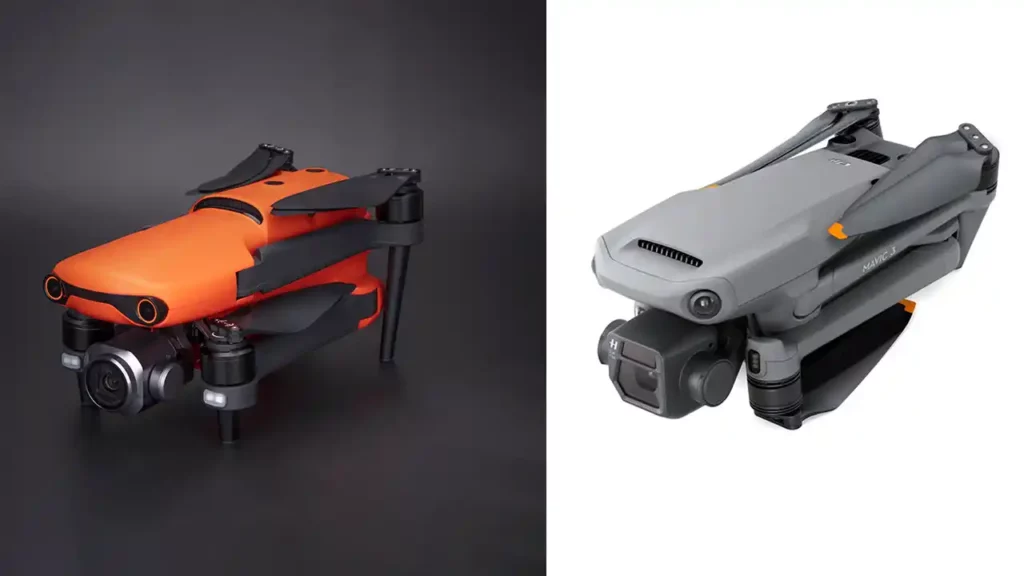
The Autel Evo 2 Pro vs DJI Mavic 3 are both foldable drones that are easy to carry and store. They have similar dimensions and weight, with the Autel Evo 2 Pro being slightly larger and heavier than the DJI Mavic 3. Here are the exact measurements and weight of each drone:
- Autel Evo 2 Pro: 228 x 133 x 110 mm (unfolded), 228 x 133 x 77 mm (folded), 1.19 kg (weight)
- DJI Mavic 3: 283 x 253 x 94 mm (unfolded), 214 x 100 x 82 mm (folded), 900 g (weight)
Both drones have a sleek and aerodynamic design, with four propellers, a gimbal-mounted camera, and multiple sensors. The Autel Evo 2 Pro has a bright orange color, while the DJI Mavic 3 has a gray color.
The Autel Evo 2 Pro also has a built-in LED display on the top of the drone that shows the battery level, flight mode, and other information. The Autel Evo 2 Pro vs DJI Mavic 3 both come with a remote controller that has a foldable phone holder, joysticks, buttons, and antennas.
Autel Evo 2 Pro’s remote controller has a 3.3-inch OLED screen that displays the live video feed from the drone, while the DJI Mavic 3’s remote controller does not have a screen and relies on the connected smartphone for the live video feed.
Autel Evo 2 Pro vs DJI Mavic 3 Camera
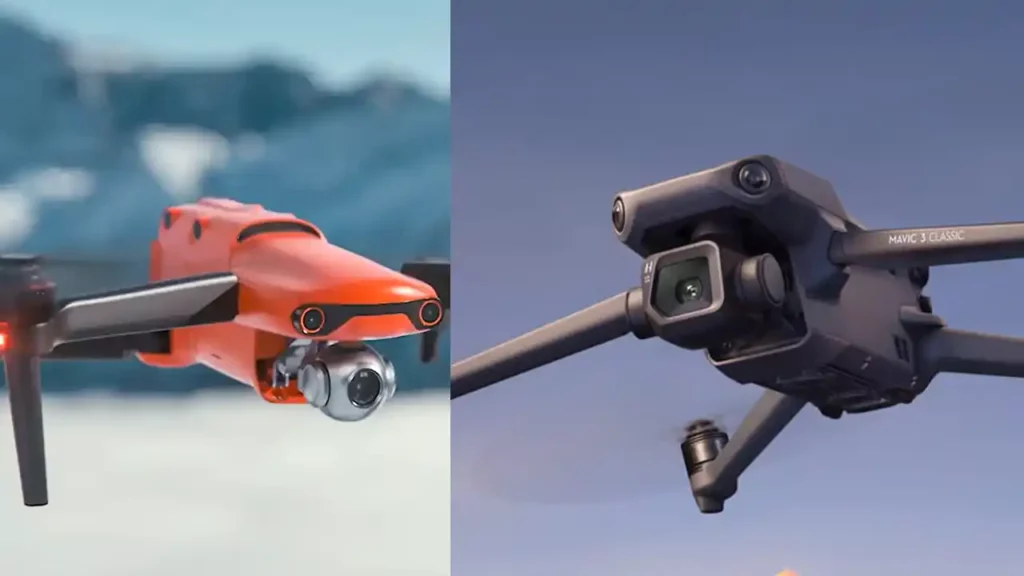
The camera is one of the most important features of a drone, as it determines the quality of the photos and videos you can capture. The Autel Evo 2 Pro vs DJI Mavic 3 both have impressive cameras that can shoot high-resolution videos and photos, but they have some differences in terms of the sensor, lens, zoom, and stabilization.
The Autel Evo 2 Pro has a 1-inch CMOS sensor that can capture 20-megapixel photos and 6K videos at 30 frames per second (fps). It also has an adjustable aperture from f/2.8 to f/11, a 29 mm equivalent focal length, and a 100° field of view.
The Autel Evo 2 Pro can also record 4K videos at 60 fps, 2.7K videos at 120 fps, and 1080p videos at 240 fps. It also supports 10-bit color depth, HDR, and H.265 codec.
The DJI Mavic 3 has a 4/3 CMOS sensor that can capture 12-megapixel photos and 5.1K videos at 50 fps. It also has a fixed aperture of f/2.8, a 24 mm equivalent focal length, and an 84° field of view.
The DJI Mavic 3 can also record 4K videos at 120 fps, 2.7K videos at 240 fps, and 1080p videos at 480 fps. It also supports 10-bit color depth, HDR, and H.265 codec.
The Autel Evo 2 Pro has a 4x lossless zoom and an 8x digital zoom, while the DJI Mavic 3 has a 4x lossless zoom and a 28x digital zoom. The DJI Mavic 3 also has a secondary camera with a 1/2.3 CMOS sensor, a fixed aperture of f/4.4, a 162 mm equivalent focal length, and a 15° field of view.
This camera can capture 12-megapixel photos and 4K videos at 30 fps, and it can be used for zooming, tracking, and obstacle avoidance. The Autel Evo 2Pro vs DJI Mavic 3 both have a 3-axis gimbal that stabilizes the camera and ensures smooth and stable footage.
They also have various shooting modes, such as panorama, timelapse, hyperlapse, and slow motion. They also support RAW and JPEG formats for photos and DNG and MP4/MOV formats for videos.
Autel Evo 2 Pro vs DJI Mavic 3 Performance
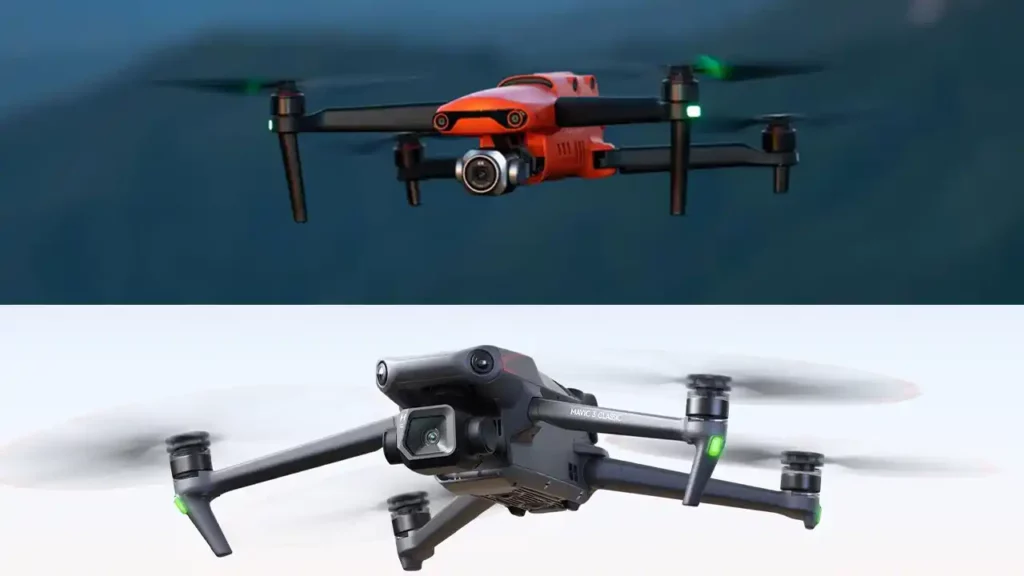
The performance of a drone depends on several factors, such as the flight speed, flight distance, obstacle avoidance, and intelligent features. The Autel Evo 2 Pro and the DJI Mavic 3 both have excellent performance, but they have some differences in terms of the specifications and capabilities.
The Autel Evo 2 Pro has a maximum flight speed of 72 km/h, a maximum flight distance of 9 km, and a maximum flight time of 40 minutes. It also has a 12-sensor omnidirectional obstacle avoidance system that can detect and avoid obstacles in all directions.
It also has a dual-core processor that enables advanced features, such as dynamic tracking, orbit, parallel, tripod, gesture control, and more. The DJI Mavic 3 has a maximum flight speed of 82 km/h, a maximum flight distance of 30 km, and a maximum flight time of 46 minutes.
It also has a 12-sensor omnidirectional obstacle avoidance system that can detect and avoid obstacles in all directions. It also has a quad-core processor that enables advanced features, such as ActiveTrack 5.0, Point of Interest 4.0, Spotlight 3.0, MasterShots, QuickShots, and more.
Battery
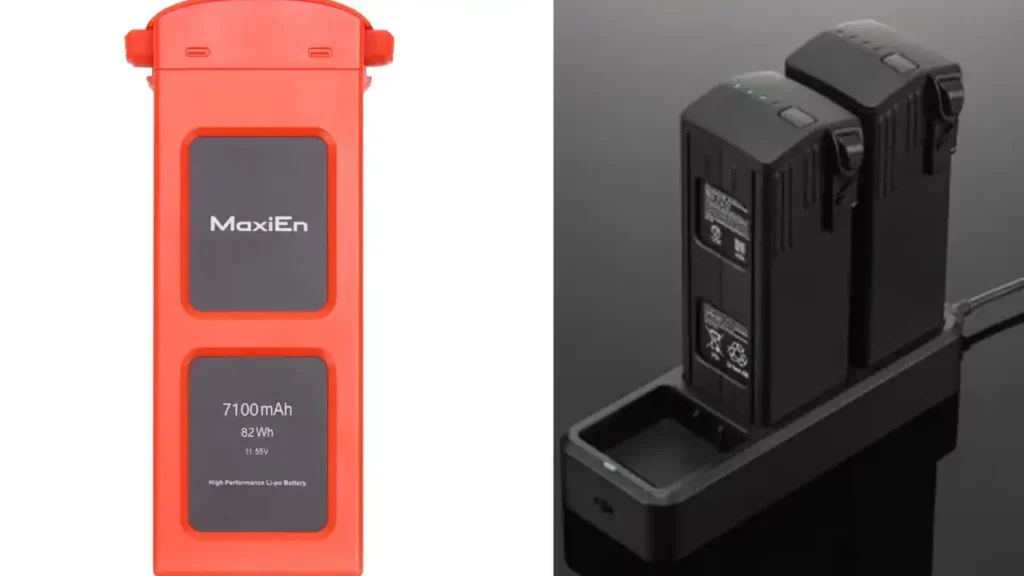
The battery of a drone determines how long you can fly and how often you need to recharge. The Autel Evo 2 Pro and the DJI Mavic 3 both have intelligent batteries that are easy to install and remove, and that show the remaining power level.
They also have fast chargers that can fully charge the batteries in about an hour. The Autel Evo 2 Pro has a 7100 mAh battery that can provide up to 40 minutes of flight time.
The DJI Mavic 3 has a 5000 mAh battery that can provide up to 46 minutes of flight time. The DJI Mavic 3 also has a battery charging hub that can charge up to four batteries simultaneously.
Price
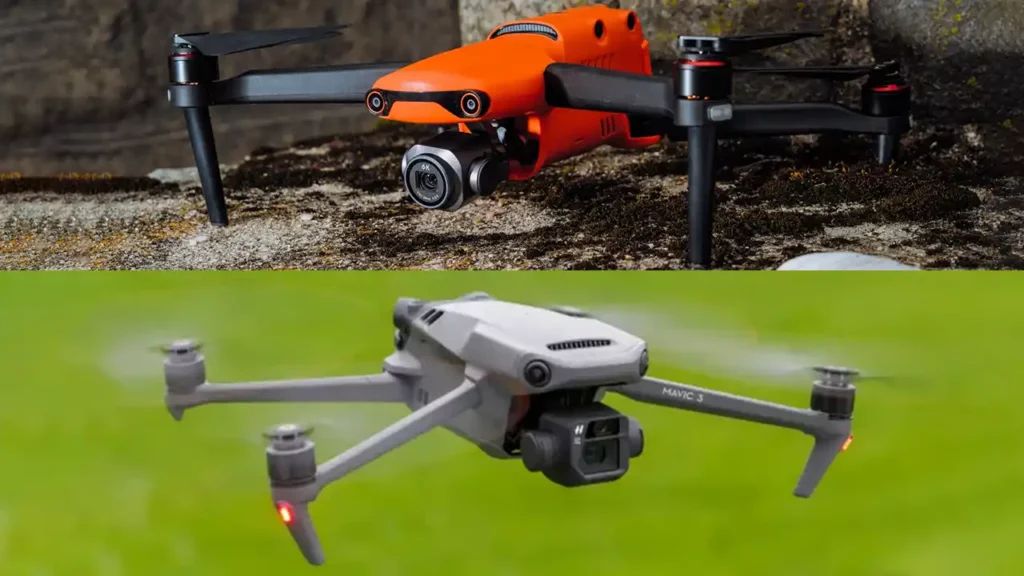
The price of a drone is an important factor to consider, as it reflects the value and quality of the product. The Autel Evo 2Pro and the DJI Mavic 3 are both premium drones that offer high-end features and performance, but they have different price tags.
The Autel Evo 2 Pro costs $2,500, which includes the drone, the remote controller, one battery, one charger, four propellers, one 32 GB microSD card, and a hard case. The DJI Mavic 3 costs $2,301, which includes the drone, the remote controller, one battery, one charger, four propellers, one 64 GB microSD card, and a soft bag.
Pros and Cons
To summarize, here are the pros and cons of each drone:
Autel Evo 2 Pro
Pros:
- 6K video resolution
- 20-megapixel photo resolution
- 1-inch sensor
- Adjustable aperture
- Built-in OLED screen on the remote controller
- Bright orange color
Cons:
- Shorter flight distance
- Heavier weight
- Fewer intelligent features
- Higher price
DJI Mavic 3
Pros:
- 5.1K video resolution
- 4/3 sensor
- Secondary camera
- 28x digital zoom
- Longer flight distance
- Lighter weight
- More intelligent features
- Lower price
Cons:
- 12-megapixel photo resolution
- Fixed aperture
- No screen on the remote controller
- Gray color
The Autel Evo II Pro and the DJI Mavic 3 are both amazing drones that can satisfy any professional or hobbyist photographer or videographer. They both have outstanding cameras, performance, battery, and design. However, they also have some differences that may make one of them more appealing to you than the other.
If you are looking for a drone that can capture the highest resolution videos and photos, has an adjustable aperture, and has a built-in screen on the remote controller, then the Autel Evo II Pro may be the best choice for you. However, you will have to pay more and sacrifice some flight distance and weight.
If you are looking for a drone that can capture high-quality videos and photos, has a secondary camera, has a longer flight distance and time, and has more intelligent features, then the DJI Mavic 3 may be the best choice for you. However, you will have to settle for a lower photo resolution and a fixed aperture.
Ultimately, the decision is up to you and your personal preferences and needs. Both drones are excellent and worth buying, but you may find one of them more suitable
